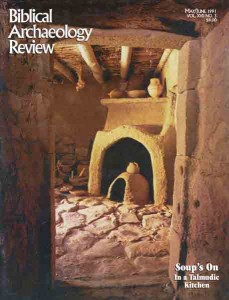
If a dog is a man’s best friend, the inhabitants of ancient Ashkelon had many friends indeed. Excavators at this site along Israel’s Mediterranean coast have uncovered a huge dog cemetery, with more than 700 burials—the largest animal cemetery known from the ancient world, leading Lawrence E. Stager to wonder, “Why Were Hundreds of Dogs Buried at Ashkelon?” In our last issue, Stager traced the history of Ashkelon under the Canaanites and the Philistines. Now he takes us to the Persian period, an economic boomtime for the port city. Phoenicians, Persians, Greeks, Egyptians and Jews lived side by side, their cultures enriching the city. And then there were all those dogs. Stager links the dogs to healing cults in the ancient Near East and contributes a box elaborating on healing and plague gods. For those of you who have been awaiting—either with eager anticipation, glum trepidation or scholarly detachment—Stager’s discussion of the erotic lamps from Ashkelon, you will have to wait yet another issue. What started as one large article grew to two and, now, to three (where it will end, we promise!).
Already a library member? Log in here.
Institution user? Log in with your IP address.

